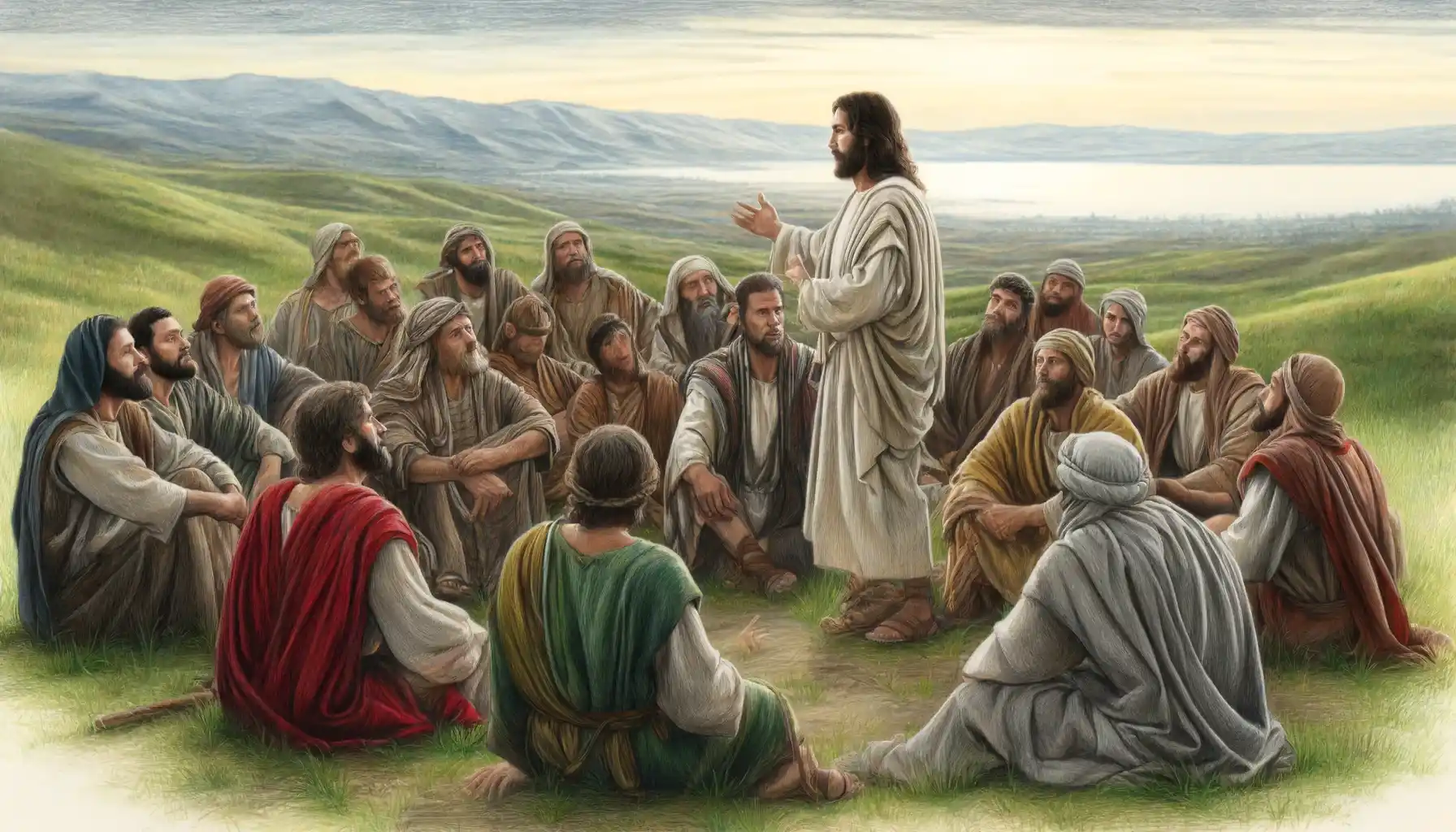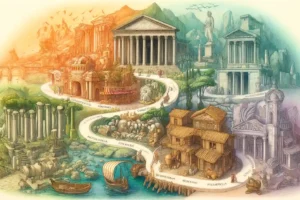
The Twelve Disciples of Jesus
The Twelve Apostles of Jesus are central figures in the New Testament, chosen by Jesus Christ himself to spread his teachings and establish the early Christian Church. Their names and brief descriptions are listed in Matthew 10:2-4 among other Gospels. Here are some quick facts about each apostle as mentioned in this passage:
Quick Facts about The Twelve Apostles:
- Simon Peter: Often regarded as the leader of the apostles, Peter was a fisherman by trade before he was called by Jesus. Known for his impulsive nature and strong faith.
- Andrew: Peter’s brother, also a fisherman. Known for bringing others to Jesus, including his brother Peter.
- James (son of Zebedee): Also known as James the Greater. He was a fisherman and one of the first disciples to join Jesus.
- John: The brother of James and also a son of Zebedee. Believed to be the beloved disciple of Jesus and the author of the Gospel of John.
- Philip: From Bethsaida, the same town as Andrew and Peter. Known for his thoughtful approach to following Jesus.
- Bartholomew: Also identified as Nathanael in the Gospel of John. Recognized for his sincerity and straightforwardness.
- Thomas: Also known as Didymus. Famous for his initial doubt about Jesus’ resurrection until he saw Jesus alive.
- Matthew: The tax collector formerly known as Levi. He is credited with writing the Gospel of Matthew.
- James (son of Alphaeus): Often called James the Less to distinguish him from James, son of Zebedee.
- Thaddaeus: Identified in some traditions as Jude, the brother of James the Less. Known for his question to Jesus in John 14 about the revelation of Jesus to the disciples.
- Simon the Zealot: Known for his zealous nature prior to joining Jesus. He was likely associated with the zealots, a Jewish political movement.
- Judas Iscariot: Infamous for betraying Jesus. His actions led to Jesus’ arrest and crucifixion, and he is known for his tragic end.
The Twelve Apostles of Jesus are foundational figures in Christian theology and church history, each bringing unique characteristics and playing specific roles in the dissemination of Jesus’ teachings and the early growth of the Christian Church. A detailed analysis of each apostle based on Matthew 10:2-4 and other scriptural references provides a deeper understanding of their individual contributions and legacies.
Detailed Analysis of The Twelve Apostles:
- Simon Peter:
- Background: Originally a fisherman.
- Characteristics: Known for his impulsive actions and profound leadership qualities. He declared Jesus as the Messiah and was part of Jesus’ inner circle.
- Legacy: Crucially involved in the early church, especially among Jewish Christians. Traditionally martyred in Rome, crucified upside down.
- Andrew:
- Background: Brother of Simon Peter, also a fisherman.
- Characteristics: Known for bringing people to Jesus, including his own brother.
- Legacy: Preached the gospel in various regions, including Greece, where he is said to have been martyred by crucifixion.
- James (son of Zebedee):
- Background: Fisherman, brother of John.
- Characteristics: Part of Jesus’ inner circle; present at the Transfiguration and Gethsemane.
- Legacy: First apostle to be martyred, as recorded in Acts 12:1-2, killed by the sword under Herod Agrippa’s rule.
- John:
- Background: Brother of James, son of Zebedee.
- Characteristics: Referred to as the “Beloved Disciple.”
- Legacy: Traditionally held to be the author of the Gospel of John, three epistles, and Revelation. Died of natural causes in Ephesus.
- Philip:
- Background: From Bethsaida, the same town as Peter and Andrew.
- Characteristics: Questioning yet devoted follower of Jesus.
- Legacy: Evangelized in Phrygia and died a martyr’s death.
- Bartholomew (Nathanael):
- Background: Possibly noble or of higher social standing.
- Characteristics: Recognized by Jesus as an “Israelite indeed, in whom there is no deceit.”
- Legacy: Thought to have preached in Armenia and India, where he was martyred.
- Thomas:
- Background: Also known as “Doubting Thomas” due to his initial disbelief about Jesus’ resurrection.
- Characteristics: Skeptical yet courageous; he declared his readiness to die with Jesus.
- Legacy: Believed to have traveled to India to spread the Christian faith, where he was martyred.
- Matthew:
- Background: Former tax collector, also known as Levi.
- Characteristics: Witness to Jesus’ inclusive approach as he was considered a social outcast before his call.
- Legacy: Traditionally recognized as the author of the Gospel of Matthew.
- James (son of Alphaeus):
- Background: Less is known about him, often called James the Less.
- Characteristics: Quiet and less prominent.
- Legacy: His ministry and death remain largely unrecorded in Scripture and tradition.
- Thaddaeus (Jude, son of James):
- Background: Also called Lebbaeus; possibly a brother of James the Less.
- Characteristics: Expresses concern in John 14 about Jesus’ revelation to the disciples.
- Legacy: Said to have evangelized parts of the Middle East and perhaps Persia.
- Simon the Zealot:
- Background: Noted for his zeal, possibly a member of the Zealots, a Jewish nationalist group.
- Characteristics: Passionate about Jewish law and nationalism.
- Legacy: Believed to have preached in Egypt and then gone to Persia, where he was martyred.
- Judas Iscariot:
- Background: The treasurer of the apostles; known for his betrayal of Jesus for thirty pieces of silver.
- Characteristics: The Gospels suggest he struggled with greed and disillusionment.
- Legacy: Died by suicide shortly after his betrayal, leaving a legacy of infamy.



